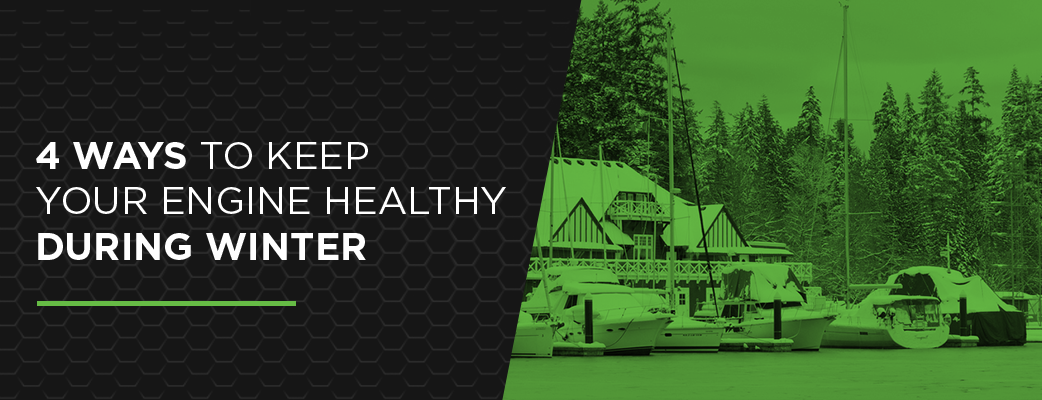
When you store your boat for winter, you’re already looking forward to spring. But before you roll on a tarp and close the door, it pays to know how to winterize your boat engine. It only takes one cold snap to leave an unprotected boat with a cracked block and its owner with a hefty bill.
In the U.S., the more temperate southern states have the highest number of insurance claims due to freezing damage, as boat owners in these mild climates are more likely to gamble on the weather rather than undertake winterization. However, since you can accomplish essential boat engine winterization in these four simple steps, there’s no reason to leave your boat out in the cold.
1. Empty the Fuel System
Stagnant fuel is prone to getting gummy, so you want to be sure to drain the fuel lines and carburetor. With the boat engine running in a tank of clean water, disconnect the fuel line. The motor will run until it’s out of fuel, ensuring there is no gumminess left behind to clog injectors or jets.
Before the engine dies, you want to be ready with a quality fogging oil for step two.
2. Fog the Engine
When an engine is placed in long-term storage, gravity gradually pulls its lubricants away from bearing surfaces like piston rings and cylinder walls. In less than a month, the lack of protective lubrication can allow corrosion to creep in. The next time you fire up that engine, its components may be susceptible to marring or sticking.
Fogging oil is a petroleum treatment in an aerosol formula. Where liquids will slip down over time, fogging oil forms a thin, persistent film that stays put and inhibits corrosion. Since you’ll be draining your fuel lines and carburetor, fogging oil is best applied just as the engine begins to get low on fuel.
For an inboard motor, spray into the carburetor itself. On an outboard motor, spray fogging oil into the air intake.
3. Drain or Stabilize the Fuel
The problems caused by old fuel make draining the tank your best option for boat engine winterization. When this isn’t practical, a fuel stabilizer is an excellent alternative. These helpful chemicals keep fuel from separating and clogging fuel lines so you can get back on the water quickly next season.
In diesel marine engines, fuel stabilizers are critical, as they inhibit bacteria growth that could cause injector issues. Regardless of your fuel type, the tank should be filled to 95% after the appropriate amount of stabilizer is added. This will limit the tank’s air space and minimize condensation.
4. Drain the Engine and Add Antifreeze
Eliminating water from your engine is the most crucial part of preventing a cracked block. Since different manufacturers have different warranty requirements, it’s best to check your owner’s manual for an exact procedure. There are numerous antifreeze formulations available specifically for marine use, and they cover a range of temperatures.
Contact Diesel Pro Power for Parts and Expertise
These simple precautions will keep your boat engine healthy during winter and ensure your boat will be ready to get back on the water as soon as you are. Winterization is also a great opportunity to complete oil changes, basic lubrication and other maintenance.
Diesel Pro Power is committed to providing the best customer experience available, and we’re here to help you navigate boat engine winterization or any other process. Call us at 888-433-4735 in the U.S. or 305-545-5588 internationally, or reach out to us online to speak with a customer service expert about the parts and service you need to keep your diesel engine rumbling.



 Free US Calls: 1-888-433-4735
Free US Calls: 1-888-433-4735 International: 305-545-5588
International: 305-545-5588